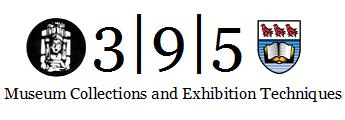 On Monday morning Cindy Vance from the Maltwood Gallery visited the students and spoke with them about public programming. After discussing some of the previous exhibits held at the Maltwood and Legacy Gallery and the public programming that accompanied them, students had the opportunity to brainstorm ideas and come up with their own ideas for public programming, entirely uninhibited by budget constraints!
On Monday morning Cindy Vance from the Maltwood Gallery visited the students and spoke with them about public programming. After discussing some of the previous exhibits held at the Maltwood and Legacy Gallery and the public programming that accompanied them, students had the opportunity to brainstorm ideas and come up with their own ideas for public programming, entirely uninhibited by budget constraints! This exercise was a prelude to the actual assignment of coming up with ideas for public programming for the exhibition of children's paintings. Today, Martin Segger, Caroline Riedel and Cindy Vance revisited the class to hear the presentation of their ideas.
Beginning with the tentative title, "Through the Eyes of Children: Art, Freedom, and Creativity", the primary theme of the proposed exhibition is Relationships. The theme of relationships is based around the idea of the reciprocity between Aller and the children he taught. The children's

art exists because of Aller, and Aller learned so much about the cultures and experiences of the children. Aller gave the children the opportunity to express themselves as they pleased, and the children painted and pasted their cultural knowledge and life experiences on paper.
The class shared two ideas for public programming. The first concept involved the creation of an interactive website that would act as (1) a database with photographs and information on all the art works in the collection (2) a forum for children to post their own art works online as a form of cross-cultural learning and sharing (3) a resource on Aller's teaching methods and philosophy and (4) a list of artists' names to enable easy searching by family members. In addition to this interactive space, workshops for children and talks by experts for adults about the collection were suggested.
The second idea for public programming was a story-telling and creative response session, where family members of Aller, the artists, and the artists themselves could come and talk to visitors to the exhibition about their experiences in relation to these art works. The audience would be given the opportunity to creatively respond to these stories, making this sort of programming family-friendly, educational, and an embodied, participatory experience.

No comments:
Post a Comment